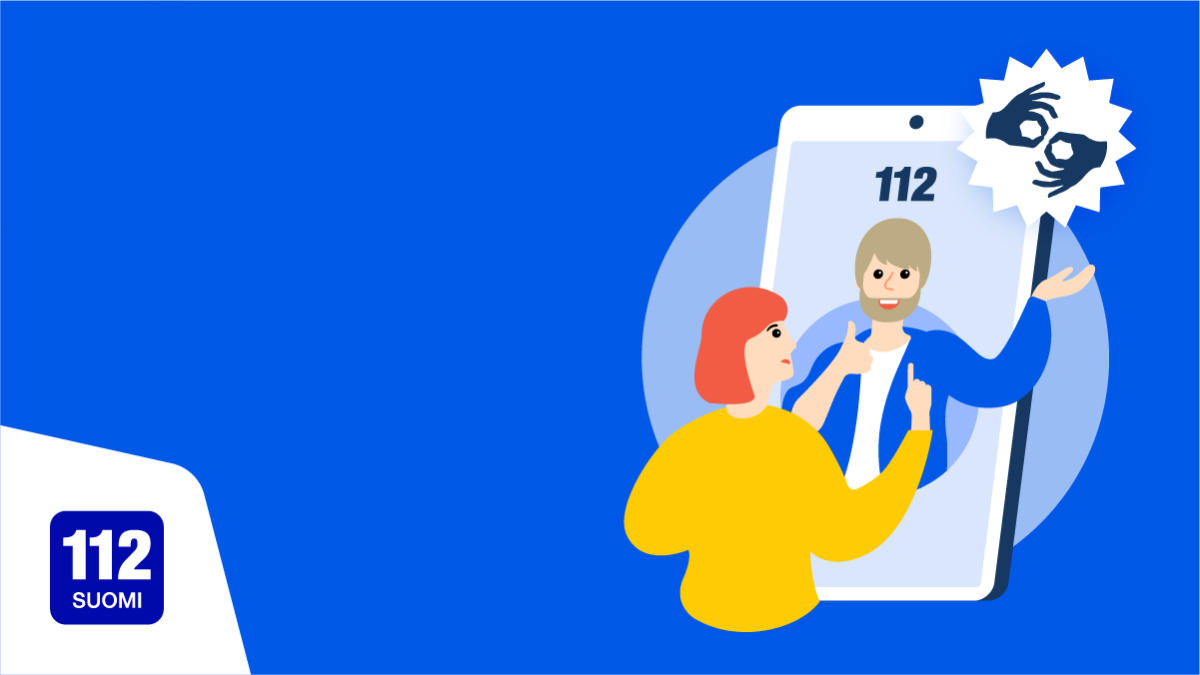Sign language emergency call pilot project starts in June 2021

This June, Kela and the Emergency Response Centre Agency are launching a pilot project to allow people to make emergency calls in Finnish sign language using the 112 Suomi application. The goal is to promote equal treatment in government services.
The pilot project is targeted at deaf persons and persons with impaired hearing who use Finnish sign language as their first language. The pilot project aims to find out how well the 112 Suomi application and Kela’s remote service are suited to emergencies and the activities of public authorities and how the services could be developed. The pilot project starts on 15 June 2021 and lasts for one year.
The pilot project is a historic experiment. The goal is to promote the equal treatment of citizens and allow people to use their first language in services that have not supported their language before.
“Previously, it has not been possible to make emergency calls in sign language, so this is a completely new service,” says Mikko Toivanen, Head of the Centre of Expertise at Kela.
The cooperation between Kela and the Emergency Response Centre Agency is also a new endeavour. Taking part in the cooperation is Kela’s Interpreter Service for the Disabled.
“It’s great that this cooperation has given the possibility of interpreting emergency calls made in sign language,” says Marko Nieminen, Head of operational Department at the Emergency Response Centre Agency.
Although this is an experiment, the service is intended for real emergencies. Anyone who uses Finnish sign language to communicate can make an emergency call in sign language. The caller does not have to be a customer of Kela’s Interpreter Service for the Disabled.
How to make an emergency call in sign language
To make an emergency call in sign language, use the 112 Suomi application. You should download the application to your device in advance before there is an actual emergency.
If there is an emergency, the caller can use the 112 Suomi application to make a video call to a sign language interpreter from Kela’s remote interpreting service. The interpreter makes a voice call to an emergency response centre operator, who will then process the emergency call with the help of the interpreter. The service is available from Monday to Friday from 08:00 to 16:00.
Link to the remote emergency call interpreting service can also be found at 112.fi and kela.fi. You can still report emergencies by sending a text message once you have signed up to the emergency SMS service.
The updated version of the 112 Suomi application will be available in app stores on 15 June.
Statistics on the emergency number 112
In 2024, the Emergency Response Centre Agency received an average of 7,600 emergency calls every day. Of these calls, 1,600 should not have been made to the emergency response centre. Roughly one half of the calls were passed on to authorities while the other half were handled by the emergency response centre operator through guidance and advice. The average time in which an emergency call was picked up was seven seconds.
How to instruct different target groups in calling the emergency number
The 112 Day campaign has issued instructions on calling the emergency number for the general public as well as children and young people, older people and foreign-language speakers. Learn more about the instructions and make use of the associated materials.
The emergency number provides safety for children
Teaching children how to use the emergency number correctly is a safety action. It is important to talk to children about identifying emergencies and encourage them to report an emergency.
Emergency number emphasised in different ways to different target groups
The 112 Day is a nationwide campaign aimed at raising Finnish people’s awareness of the emergency number 112 and how to recognise emergencies. When it comes to 112 training, it is a good idea to consider the characteristic behaviour and understanding of the target group. For example, it is advisable to emphasise different things to children and young people than older people, immigrants and foreign nationals.
Representing your profession at the Independence Day Reception
Anniina Takala, the ERC Operator of the Year, will celebrate the Finnish Independence Day at the Presidential Palace. She feels that the invitation honours the whole profession.



